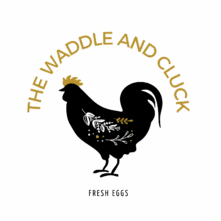Monarch butterflies are probably the most popular and best-known butterfly in North America. Its bright orange and black wings, adorned with white spots on the head and wing margins, make it easily recognizable. Monarchs are currently migrating, and I’ve spotted a few flying over the meadows or stopping for nectar at Becky’s flowers.
However, it’s disheartening to note that their numbers are significantly lower than in previous years. There aren’t nearly as many monarchs as there used to be, which reflects a broader trend of declining monarch populations across North America.
The butterflies are currently heading south, making their way to their wintering grounds in the mountain forests of Central Mexico. Along the way, they lay eggs on milkweed plants, the only host plant for their caterpillars. Milkweed is crucial to the monarch’s life cycle, as it provides both a food source and a safe environment for the development of the next generation.


Monarch Caterpillars and Milkweed
Monarch caterpillars are easily identifiable by their yellow, white, and black bands, as well as the paired black filaments on their head and tail. These distinctive caterpillars feed exclusively on milkweed, which contains toxins called cardiac glycosides.
While these toxins would be harmful or even deadly to many other insects, monarchs have evolved a remarkable ability to neutralize them. This adaptation not only protects the monarch caterpillars as they feed but also makes both the caterpillars and adult butterflies distasteful to predators, such as birds. By ingesting the toxins during the caterpillar stage, monarchs become unappetizing to potential predators throughout their entire life cycle.



Fourth-Generation Butterflies
The butterflies migrating south now are not the same ones we saw in the spring. They are part of a unique phenomenon known as the monarch’s multi-generational migration. These are the fourth-generation butterflies, the great-great-grandchildren of the monarchs that left their wintering grounds in Mexico earlier this year.
In the spring, monarchs begin their long journey northward from Mexico, traveling thousands of miles across North America, sometimes reaching as far as Canada. As they migrate, the first-generation butterflies lay their eggs on milkweed plants along the way. After the eggs hatch, the resulting caterpillars grow, pupate, and eventually emerge as second-generation butterflies. This cycle continues, with each new generation moving further north, until we reach the fourth generation. These fourth-generation monarchs are biologically different from the previous three—they are the ones that will migrate all the way back to Mexico, where they will spend the winter before the cycle begins again.
The Decline in Monarch Populations
Unfortunately, the number of monarch butterflies has dramatically decreased in recent years. Over the past two decades, more than 90% of North America’s monarch population has vanished. This sharp decline is primarily due to the loss of habitat and the widespread use of herbicides. Milkweed, the caterpillar’s only food source, is often a target of these herbicides, which can devastate entire habitats that monarchs depend on for their survival. Without milkweed, the monarch population cannot thrive.
Saving the Monarch
If we want to save the monarch butterfly from extinction, we need to take immediate action. Ranchers and farmers play a critical role in this effort. They need to be made aware of the threat that herbicides pose to monarchs and encouraged to adopt more sustainable land management practices. Additionally, local governments should eliminate the use of herbicides for roadside spraying. These simple actions can go a long way in preserving milkweed and, by extension, the monarch population.

On a more personal level, homeowners can also contribute to the survival of monarchs by planting milkweed in their gardens. By providing a habitat for monarchs in residential areas, we can create more spaces where these butterflies can lay their eggs and sustain their population.
In our own community, I took the initiative to contact our Tulsa County Commissioner and ask if the roadside spraying in our area could be stopped. After explaining the situation and the importance of preserving milkweed for monarchs, he agreed, and now we no longer have spraying along our mile of Lewis Avenue. This small step has made a significant impact on the local monarch population, and I encourage others to do the same.
You can also visit Save Our Monarchs to find out how you can help.
Final Thoughts on the Monarch Butterfly
The monarch butterfly is not just a beautiful creature but also a vital part of our ecosystem. Watching them migrate and transform from caterpillars to butterflies is a remarkable experience, one that we should work to preserve for future generations. By reducing herbicide use and planting more milkweed, we can help reverse the decline in monarch populations and ensure that these butterflies continue to grace our gardens, meadows, and skies for years to come.
Read more Nature Notes.








